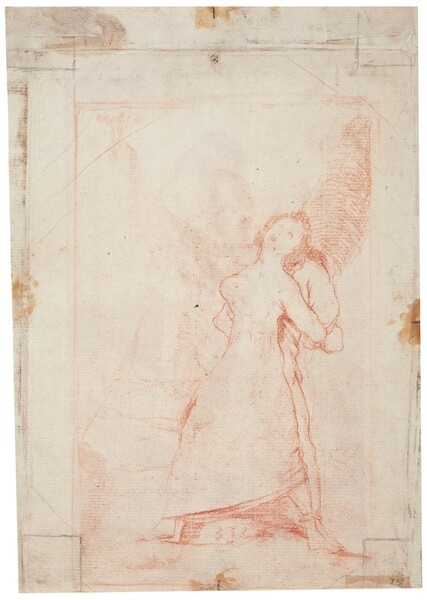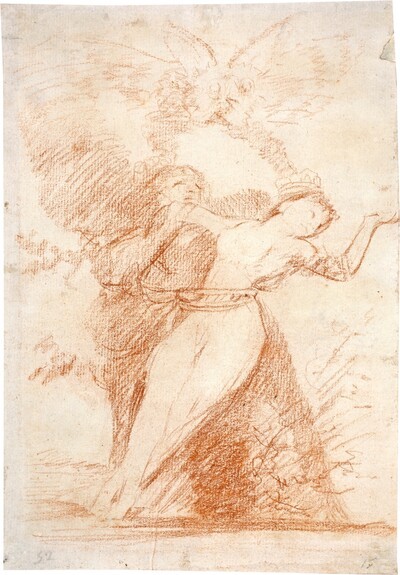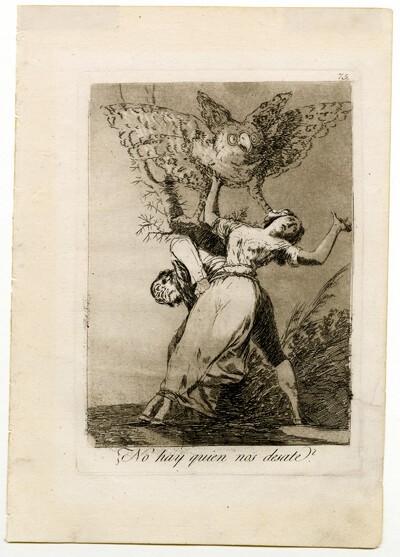- Cronología
- Ca. 1797 - 1798
- Ubicación
- The Prado National Museum. Madrid, Madrid, Spain
- Dimensiones
- 236 x 166 mm
- Técnica y soporte
- Reconocimiento de la autoría de Goya
- Documented work
- Titular
- El Prado National Museum
- Ficha: realización/revisión
- 13 Sep 2022 / 27 Jun 2023
- Inventario
- D4360/001
75 (in pencil, lower right corner)
Watermark: H C WEND / & / ZOONEN
On the origin of this and other preparatory drawings for The Caprices, see the commentary on the first of them, corresponding to Caprice number 1 (Francisco de Goya y Lucientes, painter), and on the one corresponding to Caprice 3 (The bogeyman is Coming).
Line of provenance of this drawing: Javier Goya; Mariano Goya, 1854; Valentín Carderera, ca. 1861; Mariano Carderera, 1880; Prado Museum, 1886.
This drawing is the verso of Caprice 12. Hunting for teeth. It bears a certain resemblance to Caprice 75. Is there no one to untie us?, but even so it perhaps not a first idea for the engraving.
The image of two people tied to a tree and apparentrly begging to be untied was merely the plastic expression of an idea that was quite common in Goya´s time. The position of the figures in the drawing . There is no one to untie us? (1) and in the final print allows for a much more harmonious composition than in the present drawing.
The monolithic effect of this couple reappears in Disorderly Folly, but exploited in a totally different context where the bizarre borders on the irrational.
-
Santander2017
-
Los Caprichos de Goya y sus dibujos preparatoriosBarcelonaInstituto Amatller de Arte Hispánico1949p.101
-
Goya’s Caprichos. Beauty, Reason and CaricatureNueva JerseyPrinceton University Press1953p. 210, fig. 240
-
MadridMuseo del Prado1954n. 76
-
Vie et ouvre de Francisco de GoyaParísOffice du livre1970p.185, nº 475 y 604
-
Dibujos de Goya, 2 volsBarcelonaNoguer1975pp. 112, 162
-
Los Caprichos de Goyacol. Serie punto y líneaBarcelonaGustavo Gili1977pp.51-52
-
El mundo de Goya en sus dibujosMadridUrbión1979pp. 103-105
-
MadridMuseo Nacional del Prado1999pp. 107, 373


